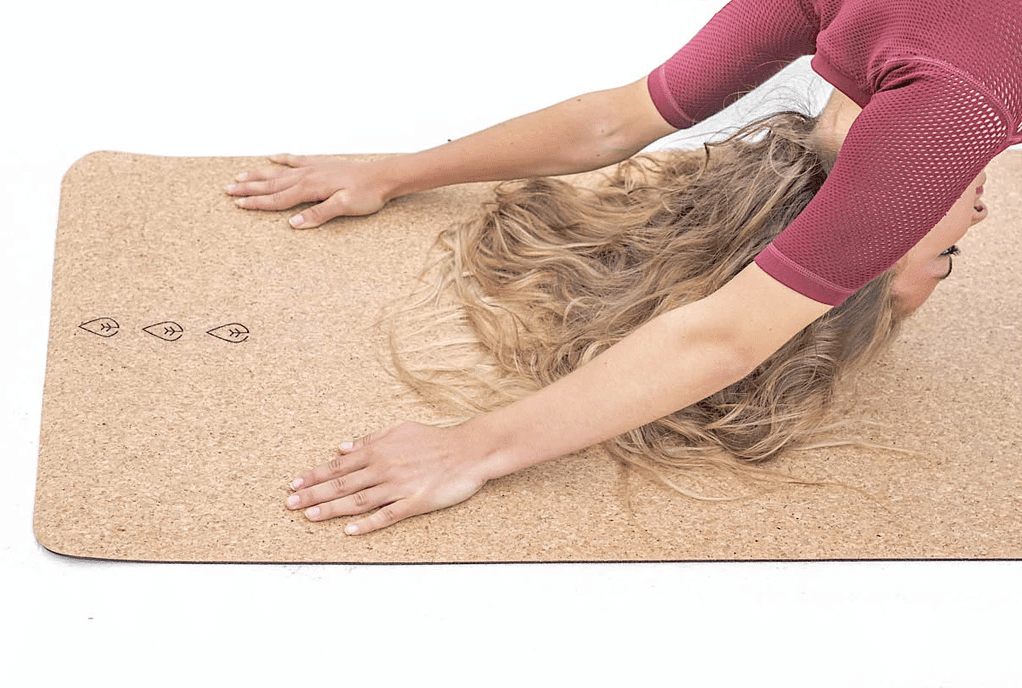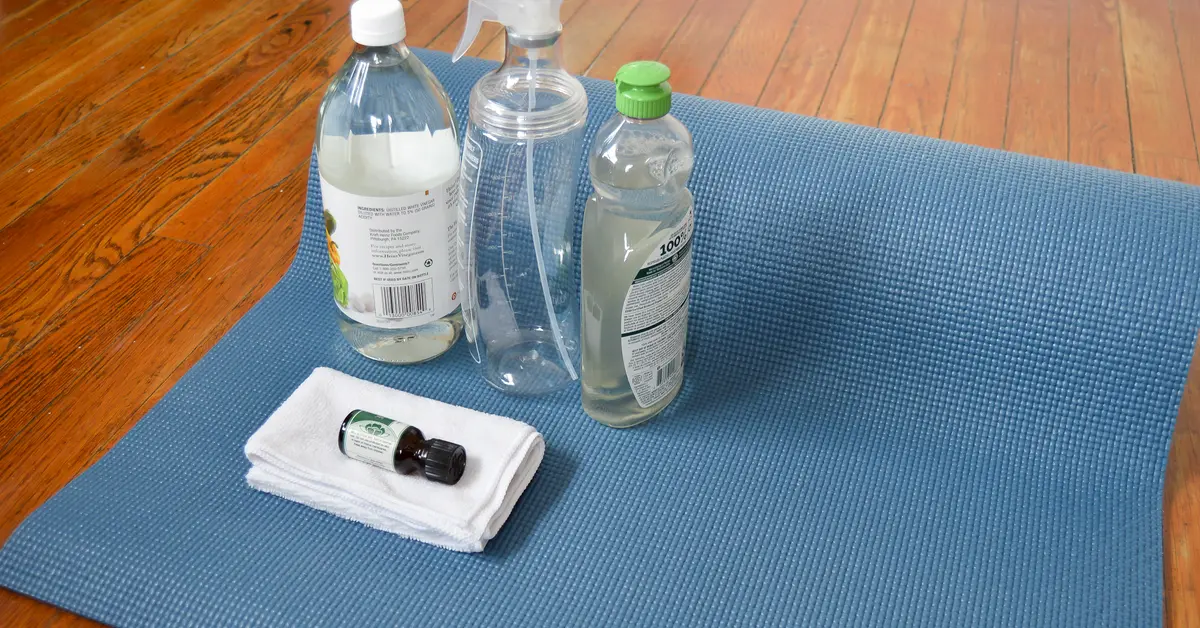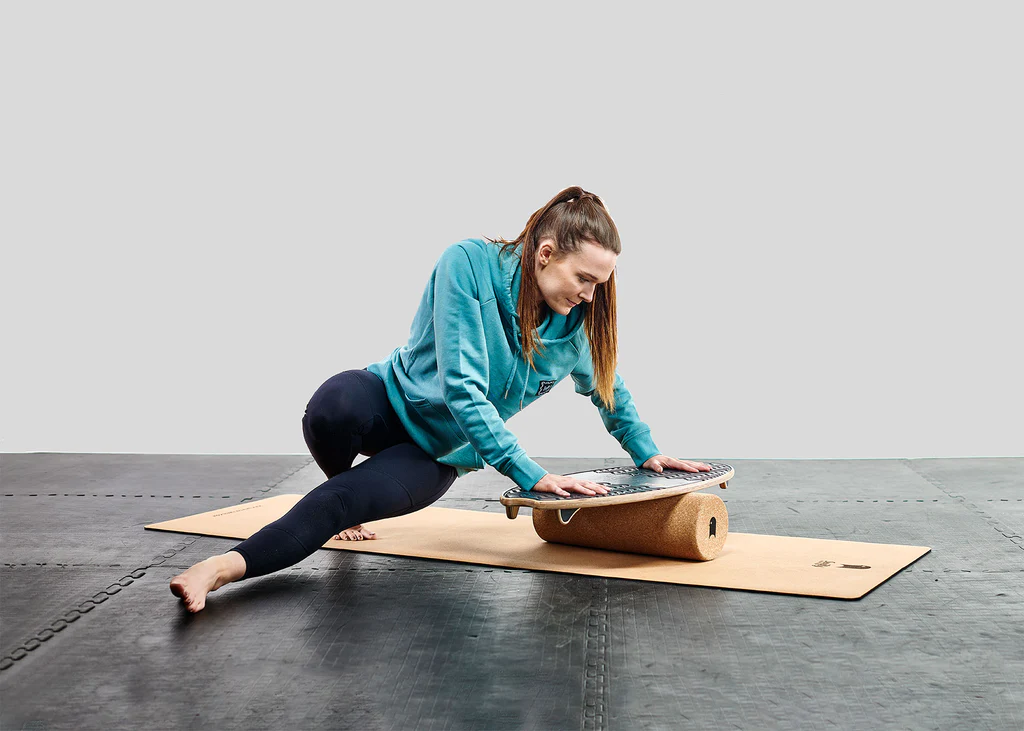Switching to a cork yoga mat is a great choice for the eco-conscious yogi. Cork mats offer a non-slip surface and are made from 100% sustainable materials, making them a popular option. While they might cost a bit more than mats made from rubber or plastic, they require a specific care routine to keep them looking great.
You might be wondering how to maintain your cork yoga mat’s condition. How can you clean it without harming the material? What are the best practices to ensure it lasts a long time? Let’s find out these questions and provide a simple guide on how to care for your cork yoga mat.

Contents
How To Clean Cork Yoga Mat?
Cleaning your cork yoga mat properly is key to maintaining its longevity and ensuring it remains hygienic for your practice. Cork is a naturally antimicrobial and water-resistant material, but it still requires care to keep it in top condition. Here’s a simple guide on how to clean your cork yoga mat:
What You’ll Need:
- Cold water
- Gentle soap (optional)
- Soft cloth or sponge
- Spray bottle (optional)
Step-by-Step Guide:
1. Create a Cleaning Solution:
If your mat isn’t too dirty and just needs a freshening up, cold water alone might suffice. For more thorough cleaning, mix a few drops of gentle soap with cold water in a spray bottle. Avoid using hot water as it can damage the cork.
2. Wipe Down the Mat:
Dampen a soft cloth or sponge with your cleaning solution. Wring out excess liquid to ensure the cloth is just damp and not soaking wet. Gently wipe the surface of the mat, paying extra attention to any areas that seem particularly dirty. Avoid scrubbing too hard, as this can damage the surface of the cork.

3. Rinse with Clean Water:
If you used soap, it’s important to remove any soapy residue. Use a clean, damp cloth, rinsed in cold water, to wipe down the mat again. Leaving soap on the mat can make it slippery and reduce its natural grip.
4. Air Dry:
Lay the mat flat to air dry in a well-ventilated area out of direct sunlight. Cork dries fairly quickly, but make sure it’s completely dry before rolling it up again to avoid trapping moisture, which could damage the mat.
5. Store Properly:
Once dry, store your cork yoga mat in a cool, dry place. Avoid leaving it in hot, humid, or damp areas as prolonged exposure to these conditions can degrade cork over time.
Which Essential Oils to Use on Your Cork Mat?
Using essential oils on your cork yoga mat can enhance your yoga experience by adding a calming or energizing aroma, depending on the oils chosen. Cork is naturally antimicrobial, but the subtle use of essential oils can provide additional antibacterial properties and a pleasant scent. Here are some ideal essential oils to use on your cork yoga mat:

1. Lavender:
Lavender oil is known for its calming and relaxing properties. It’s perfect for evening yoga sessions or any practice that focuses on relaxation and stress relief.
2. Tea Tree:
Tea tree oil has strong natural antibacterial and antifungal properties, making it a great choice for sanitizing your mat. It can help keep the surface clean and odor-free.
3. Eucalyptus:
Eucalyptus oil is refreshing and invigorating, perfect for energizing morning yoga practices. It also has natural antibacterial qualities, which help in maintaining the hygiene of your mat.
4. Lemongrass:
Lemongrass oil has a light, fresh citrus scent that can help enhance your mood and energy levels. It’s also known for its natural antifungal properties.
5. Peppermint:
Peppermint oil is stimulating and can help increase focus and mental clarity during your yoga practice. Its cool, minty aroma is especially pleasant during intense physical or heat-building sequences.
How to Store Your Cork Mat to Keep it in Good Shape
Mindful storage of a cork yoga mat can prolong its life and preserve its quality. Let’s outline four key strategies for properly storing your cork yoga mat.
- Keep it cool and dry. Natural cork is highly responsive to changes in temperature and humidity. Safeguard your mat by finding a storage space in a cool, dry area. Avoid humid locations, like bathrooms, as moisture could cause damage by promoting mold growth.
- Stay away from the sun. Yes, cork is a naturally durable material, but direct sunlight can still cause it to crack and degrade. Find a shady spot to house your yoga mat when it’s not in use.
- Don’t fold the mat. Despite cork’s flexibility, folding your mat could cause creases and affect its form. Instead, roll up your mat before storage.
- Protect against harsh weather. If you prefer taking your yoga mat to outdoor sessions, ensure that it doesn’t get subjected to severe weather conditions. In cases of rain or snow, make sure you have a protective cover or bag to shield your mat.
How Often Should You Clean Your Cork Yoga Mat?
In caring for your cork yoga mat, frequency matters. Let’s talk timing. Depending on use, a quick wipe down after every session serves to maintain freshness. This is especially advised if your yoga routine involves a lot of sweat. For those with moderate to minimal use, a weekly cleaning fits the bill. This balance ensures that the mat’s quality remains uncompromised.

However, deep cleaning, while beneficial, doesn’t require a regular timetable. Cork’s natural antimicrobial qualities ease the effort. Unlike regular mats, cork doesn’t trap odors, reducing the need for frequent deep cleans.
What Not to Use on Your Cork Mat?
Here’s a breakdown of what to avoid using on your cork yoga mat to keep it in pristine condition:
1. Harsh Chemicals:
- Soap and Detergent: Regular household soaps and detergents can be too harsh for cork. They can strip away the natural oils in the cork, making it dry and brittle over time. Stick to water-based cleaning methods or natural cleaning solutions.
- Disinfectants and Sanitizers: Many commercial disinfectants and sanitizers contain harsh chemicals like bleach or alcohol. These can damage the cork and potentially leave behind residues that irritate your skin.
2. Excessive Moisture:
- Submerging in Water: Never fully submerge your cork yoga mat in water. Cork is a natural material and prolonged exposure to water can cause it to warp, swell, and lose its shape. Spot clean with a damp cloth for routine cleaning.
3. Abrasive Materials:
- Scouring Pads and Sponges: Avoid using abrasive cleaning pads or sponges on your cork yoga mat. These can scratch and damage the surface of the cork. Use a soft, damp cloth for wiping.
4. Direct Heat and Sunlight:
- Hot Water: Avoid using hot water when cleaning your cork yoga mat. Stick to lukewarm or cool water to prevent the cork from drying out and becoming brittle.
- Direct Sunlight: While occasional sunlight exposure is okay, avoid leaving your cork yoga mat in direct sunlight for extended periods. This can dry out the cork and make it crack. Store your mat in a cool, dry place when not in use.
Other Potential Irritants:
- Strong Essential Oils: Certain essential oils, particularly citrus oils like lemon or orange, can be too acidic for cork. These can break down the natural oils in the cork and cause damage over time. Opt for gentler essential oils like tea tree oil, lavender oil, or lemongrass oil, used in diluted solutions.
Frequently Asked Questions
Can a cork yoga mat get wet?
While it’s not advised to store your mat wet as this could lead to mold or material break down, cork yoga mats can handle some moisture. It’s best to air-dry your mat completely before storing it away.
Why are cork yoga blocks better?
Cork yoga blocks are heavier and more durable compared to foam. This additional weight can enhance your yoga practice by helping to build strength. However, for those frequently traveling to and from class, the extra weight could be burdensome.
How do you clean a cork mat?
The most effective way to clean a cork mat is to mildly dampen a soft cloth with cold water and gently wipe the mat down. Always let it air-dry before storing it away.
Do you need to clean a cork yoga mat?
Yes, despite cork’s antimicrobial properties, it’s important to keep your mat clean. A thorough cleaning every one to three weeks, depending on use, prevents odor, keeps germs at bay, and extends the mat’s lifespan.
Are cork yoga mats any good?
Cork yoga mats are firm and stable, providing a steadiness that many practitioners find advantageous. Their durability and non-slip nature make them a popular choice among yoga enthusiasts.

Hello, I’m Ravindra. Over the years, I’ve immersed myself deeply into the world of fitness and health, transforming both my body and mind. Writing has allowed me to share my journey, insights, and expertise with those just starting out and seasoned fitness enthusiasts alike. Beyond just routines and diets, I believe in inspiring others to adopt a holistic approach to well-being.
